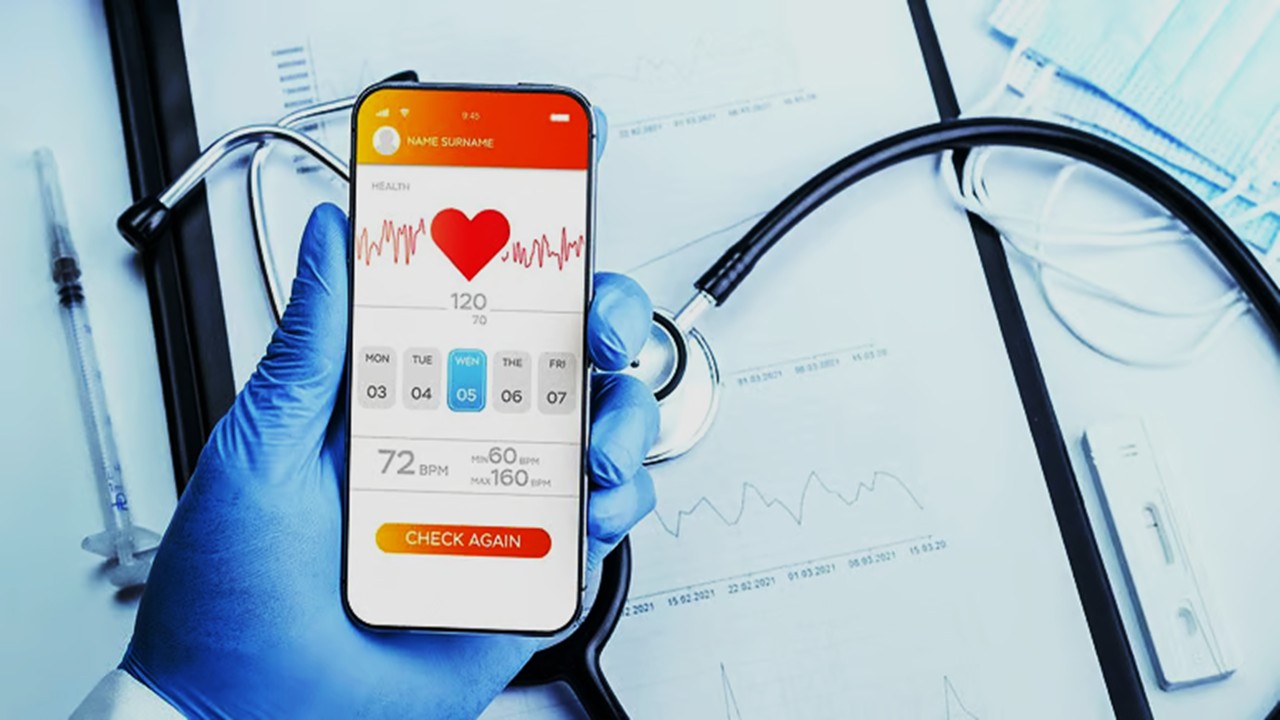The rigor of a clinical trial lies not only in its design but in its uncertainty. As patient outcomes, biomarker fluctuations, and protocol adherence unfold unpredictably, researchers are increasingly turning to machine learning (ML) as a predictive compass in an otherwise stochastic environment. Rather than passively collecting data, modern clinical trials are now designed to anticipate it—learning from every patient enrolled, adapting dynamically to patterns previously obscured by noise. At the intersection of computational biology, statistical modeling, and regulatory science, predictive analytics powered by ML is not simply an optimization tool; it is redefining how knowledge is extracted from clinical investigations. This transition represents a paradigmatic shift—away from fixed assumptions and toward continuously learning frameworks that evolve with every datapoint.
From Retrospective to Predictive: The Evolution of Data Strategy in Clinical Research
Traditionally, clinical trials have been reactive enterprises, built on fixed hypotheses and dependent on predefined endpoints. Data was gathered meticulously but often wielded only at the conclusion of a study, leaving little room to influence the trial’s trajectory as it unfolded. The statistical foundations of trial design were rooted in linear thinking—sufficient for broad population-level trends, but ill-suited for capturing the nonlinear complexities of biological systems and patient heterogeneity. As a result, promising interventions sometimes failed not because they were ineffective, but because the trial design lacked the nuance to detect efficacy within the right subpopulations or temporal windows.
Machine learning disrupts this architecture by reframing trials as systems of continuous inference rather than static observation. Instead of waiting for endpoint events to accumulate, algorithms now parse interim datasets, uncovering latent signals—early biomarkers, response trajectories, dropout predictors—that would be invisible to conventional analysis. The shift from retrospective to predictive analytics enables investigators to optimize recruitment, stratify patients with greater clinical granularity, and preemptively identify adverse events before they manifest catastrophically. This real-time feedback loop reshapes how trials are designed, monitored, and adapted.
Central to this transformation is the deployment of supervised learning models trained on historical datasets. These models learn complex mappings between baseline characteristics—genomic data, comorbidities, prior treatments—and outcomes of interest. Once trained, they can be deployed to incoming trial data, offering probabilistic forecasts about patient response or progression. What was once a passive data stream becomes an active decision-support system, enabling more intelligent trial steering. This approach offers particular value in adaptive trial designs, where interim analyses can drive protocol modifications without undermining statistical validity.
However, transitioning to a predictive analytics paradigm introduces challenges that extend beyond computation. The interpretability of models—especially deep learning systems—can be limited, raising concerns about regulatory transparency and clinical accountability. Trial sponsors and regulators alike are grappling with the epistemological shift from hypothesis-driven to data-driven trial conduct. Ensuring that predictive models are not only accurate but also justifiable is essential for their integration into clinical decision-making processes. The emphasis is no longer solely on statistical significance, but on epistemic confidence in the models themselves.
Moreover, predictive analytics must be embedded within the ethical and operational constraints of a clinical trial. Patient safety, informed consent, and equity remain paramount. While predictive models can optimize recruitment or reduce exposure to ineffective arms, they must not exacerbate existing disparities or introduce algorithmic biases. The science of prediction must therefore be coupled with the ethics of intervention, ensuring that machine learning augments rather than distorts the human dimension of clinical research.
The Architecture of Predictive Models in Clinical Trial Pipelines
At the heart of predictive analytics is the model—an algorithmic architecture designed to learn from data and make informed projections. In the context of clinical trials, models must be engineered not only for accuracy but for resilience, interpretability, and adaptability to evolving datasets. Unlike consumer-facing applications where prediction errors can be tolerated or even ignored, clinical models operate in high-stakes environments where every misclassification could misguide trial outcomes or compromise patient safety. As such, model architecture must be tailored with exceptional precision.
Most clinical prediction models begin with supervised learning, where algorithms are trained on labeled datasets to classify or regress outcomes. These datasets often integrate multimodal information—clinical notes, omics data, imaging biomarkers, longitudinal vitals—each with distinct statistical distributions and noise characteristics. Preprocessing steps such as normalization, feature engineering, and missing data imputation are critical for ensuring that input vectors are both informative and harmonized. Feature selection methods, including L1-regularization and mutual information, help prevent overfitting and enhance generalizability to unseen patient cohorts.
Model selection is another crucial step. Logistic regression and decision trees offer simplicity and transparency, while support vector machines and ensemble models (such as random forests and gradient-boosted trees) provide higher accuracy at the cost of interpretability. More recently, deep learning approaches—particularly recurrent neural networks (RNNs) and transformer architectures—have been applied to model sequential clinical events, such as adverse event trajectories or drug response timelines. These models excel in capturing temporal dependencies, but they require larger datasets and more computational resources.
Once trained, these models must be validated on external cohorts. Cross-validation techniques, such as k-fold partitioning and leave-one-out schemes, provide internal performance estimates, but true model robustness is only established through external validation. This ensures that predictive performance is not merely a reflection of overfitting to training idiosyncrasies. Techniques like SHAP (Shapley Additive Explanations) or LIME (Local Interpretable Model-agnostic Explanations) are increasingly used to decipher the decision logic of black-box models, providing insight into feature importance and helping clinicians trust model outputs.
Importantly, predictive models must also be updated over time. As clinical trial data accumulates, the underlying statistical distributions may drift—a phenomenon known as data shift. Static models risk becoming obsolete if they cannot adapt to new data realities. Incorporating mechanisms for continuous learning, or deploying models within federated learning frameworks that allow secure updating across trial sites, is essential for maintaining relevance and reliability. Thus, predictive models are not fixed assets but evolving entities that must be curated with the same rigor as any biological endpoint.
Patient Stratification and the Promise of Precision Enrollment
The success of any clinical trial is contingent on enrolling the right patients—those most likely to benefit from the investigational intervention, most representative of the target population, and least likely to introduce confounding noise. Historically, patient enrollment has relied on broad inclusion/exclusion criteria, defined by consensus and convenience rather than molecular logic. This often results in heterogenous cohorts that dilute effect sizes or mask subgroup efficacy. Predictive analytics, enabled by ML, is redefining how patients are identified, prioritized, and enrolled.
Machine learning models trained on real-world evidence—electronic health records, claims data, and previous trial datasets—can infer complex phenotypes that go beyond what static criteria can capture. For instance, an ML model might detect a latent cluster of patients whose response to an immunotherapy is linked not to a single biomarker, but to a combinatorial pattern of cytokine expression, prior medication history, and subtle imaging features. These insights allow researchers to define more nuanced eligibility criteria, enhancing signal detection and trial efficiency.
Moreover, predictive models can flag patients at risk for protocol nonadherence, dropout, or adverse events. By identifying such risks upfront, trial coordinators can provide tailored support or preemptively exclude individuals whose participation may compromise data integrity. In doing so, the predictive layer functions as a quality control mechanism, fortifying the trial against preventable disruptions and reducing statistical noise. This enhances both the internal validity of the trial and the external generalizability of its findings.
Precision enrollment also accelerates timelines. Rather than relying on passive recruitment from broad registries or slow physician referrals, predictive systems can scan integrated data networks to find eligible patients in real time. This approach is particularly valuable in rare disease trials, where finding just a handful of suitable participants can determine whether a study proceeds or stalls. In oncology, for instance, adaptive enrollment platforms have begun leveraging predictive scores to match patients to basket or umbrella trials based on their genomic and transcriptomic profiles.
However, these capabilities raise ethical and logistical questions. The automation of patient selection must be transparent, and algorithms must be audited to prevent inadvertent exclusion of underrepresented or vulnerable populations. Consent processes must be updated to inform participants about algorithmic screening mechanisms. Additionally, operationalizing predictive enrollment requires robust data integration across health systems, standardized ontologies, and privacy-preserving infrastructure. Precision, while desirable, cannot come at the expense of fairness or feasibility.
Adaptive Trial Design: Feeding the Model, Steering the Ship
The static clinical trial design—a rigid structure fixed in protocol, indifferent to incoming data—has long been a bottleneck for innovation. Adaptive designs, by contrast, welcome data midstream, adjusting course based on early findings. The interplay between predictive analytics and adaptive methodology is where machine learning reveals its most transformative potential. Rather than waiting for full data maturity, trial investigators can make real-time decisions on dosing regimens, sample sizes, and treatment arms with the guidance of dynamic models.
Predictive algorithms embedded in adaptive trials serve as navigational aids. For example, if early data suggests that one patient subgroup is exhibiting superior response to a treatment, the model may suggest reallocating more patients to that subgroup’s stratum, refining the trial’s power to detect efficacy. Similarly, futility analyses can be conducted earlier and with greater sensitivity, allowing ineffective arms to be dropped, conserving resources and ethical capital. Machine learning doesn’t merely observe; it recommends, forecasts, and supports decisions under statistical uncertainty.
One compelling domain for adaptive-predictive synergy is dose-finding studies. Traditional dose-escalation methods like the 3+3 design are slow and often suboptimal in determining therapeutic windows. ML models trained on pharmacokinetic and pharmacodynamic data can simulate dose-response curves in silico, proposing new cohorts or dose adjustments that maximize therapeutic effect while minimizing risk. This approach is especially beneficial in oncology and gene therapy, where the margin between efficacy and toxicity can be razor-thin.
Operationalizing such dynamic designs requires a continuous feedback infrastructure—data pipelines that are secure, clean, and available in near-real-time. Trial software must be capable of ingesting data from electronic data capture systems, patient-reported outcomes, lab instruments, and imaging repositories, all while maintaining compliance with regulatory and data governance frameworks. Predictive algorithms act not in isolation but as part of an orchestrated informatics ecosystem, where latency or data quality issues can ripple disastrously through decision trees.
The marriage of adaptive design and predictive modeling holds particular promise in accelerating trial timelines. By constantly learning and adjusting, such trials can reach statistically sound conclusions faster, with fewer patients, and with enhanced ethical oversight. But with this flexibility comes the burden of accountability: every model-directed decision must be documented, justified, and defensible under regulatory scrutiny. The shift is not just methodological, but philosophical—toward an experimental framework that learns as it tests, and adapts as it learns.
Predicting Adverse Events: Anticipation as a Form of Protection
One of the most formidable challenges in clinical trials is the prediction and prevention of adverse events. These events, often idiosyncratic or delayed, can derail a promising therapy, harm patients, or trigger premature trial termination. Traditionally, adverse events are logged retrospectively and analyzed after-the-fact, with causality assessed through manual review and statistical signal detection. But with machine learning, the paradigm is shifting from postmortem analysis to proactive anticipation.
By training on historical adverse event data—spanning multiple trials, drug classes, and populations—ML models can identify early harbingers of toxicity. Subtle biomarker fluctuations, pattern shifts in laboratory data, or deviations in vital signs can trigger alerts before a clinically significant event occurs. These predictive flags allow investigators to intervene early, pausing a treatment course, ordering additional diagnostics, or adjusting dosing protocols. In essence, machine learning augments clinical vigilance with computational foresight.
Natural language processing (NLP) also plays a critical role. Adverse events are frequently buried in unstructured clinical notes or patient diaries. NLP models can extract relevant text signals—symptom descriptions, timing of onset, treatment context—and structure them for predictive modeling. When integrated with structured clinical data, these hybrid inputs offer a more complete picture of patient risk profiles. This multimodal learning enriches predictive sensitivity and specificity, ensuring that true risks are caught early while minimizing false alarms.
Importantly, predictive adverse event modeling also informs the go/no-go decisions at interim analyses. If a model forecasts high toxicity rates under certain covariate combinations, trial designers can preemptively halt enrollment for those subgroups. This not only protects patients but also sharpens the understanding of treatment mechanisms. For example, a kinase inhibitor might be tolerable in patients with one genotype but cause hepatotoxicity in another—insights that emerge only through integrative modeling.
Despite these advances, challenges remain. Variability in adverse event reporting across trials, the rarity of some events, and differences in data granularity all complicate model training. Moreover, while predictive models can flag statistical correlations, they do not establish mechanistic causality. A prediction is not an explanation. Thus, machine learning must be used as a complement to—not a replacement for—clinical judgment, toxicology research, and mechanistic pharmacology.
Real-World Data Integration: Closing the Gap Between Trial and Practice
Clinical trials are often criticized for their artificiality—carefully curated patient populations, tightly controlled conditions, and short follow-up windows. This creates a chasm between trial efficacy and real-world effectiveness. Machine learning offers a bridge, enabling the integration of real-world data (RWD) into trial design, monitoring, and interpretation. This convergence makes trials more generalizable, informative, and ultimately actionable in clinical practice.
RWD includes electronic health records, pharmacy dispensation logs, insurance claims, and patient-generated health data. These datasets capture longitudinal outcomes, medication adherence, and comorbidity landscapes in ways that traditional trials rarely can. ML models trained on RWD can simulate what would happen if a trial’s inclusion criteria were widened, or if a protocol were deployed in a less controlled setting. This helps sponsors understand how a drug will perform outside of the pristine bubble of a clinical site.
Integrating RWD into trials also enhances control arm construction. In some settings, particularly rare diseases or pediatric populations, recruiting a placebo group is ethically and logistically difficult. Synthetic control arms—constructed using predictive analytics on historical RWD—offer a solution. These virtual comparators provide baseline outcome distributions, enabling more efficient and ethical trial designs while still preserving statistical rigor. Regulators are increasingly open to these approaches, provided the data sources and modeling methods are transparent and auditable.
RWD also plays a role in post-marketing surveillance. Once a drug enters the market, ML models can continuously monitor its safety and effectiveness across diverse populations, feeding insights back into trial design for next-generation molecules. This feedback loop transforms the clinical trial pipeline from a series of disconnected experiments into a living, learning system. The boundaries between trial and practice begin to dissolve, replaced by a continuum of evidence generation and hypothesis refinement.
However, integrating RWD is not trivial. Issues of data quality, missingness, semantic interoperability, and bias loom large. Machine learning can help, but only if data pipelines are curated with care and domain expertise is embedded into feature selection and model interpretation. A raw dump of claims data is not a surrogate for real-world insight. Thoughtful engineering, both human and algorithmic, is required to transform messy signals into clinical foresight.
Regulatory Implications: Learning Under Scrutiny
The regulatory landscape for clinical trials has been built over decades of precedent, grounded in the principles of reproducibility, transparency, and patient safety. Introducing machine learning into this domain introduces both opportunity and tension. On the one hand, predictive analytics can enhance trial efficiency, safety monitoring, and data quality. On the other, regulators must now evaluate not just drugs, but algorithms—with architectures that may evolve during the course of a trial.
A primary regulatory concern is explainability. Black-box models, such as deep neural networks, can achieve high predictive accuracy but offer limited transparency into their internal logic. Regulators must be able to understand how an algorithm arrived at its prediction—especially when that prediction influences trial design, patient selection, or dosing decisions. This has led to growing interest in interpretable ML methods and post hoc explainability tools, which provide surrogate explanations for complex model behavior.
Another key issue is model validation. Regulators require evidence that predictive models are accurate, robust, and generalizable. This means extensive cross-validation, external cohort testing, and sensitivity analyses must be embedded in the trial protocol. Models must be locked or version-controlled at key stages, ensuring that regulatory review reflects the exact tools used during the trial. Any updates or retraining must be documented, justified, and clearly communicated.
Data governance is also paramount. Predictive models rely on vast datasets, often pooled across institutions and countries. Ensuring data privacy, compliance with HIPAA or GDPR, and ethical stewardship of patient information are non-negotiable. Techniques such as federated learning, differential privacy, and secure multi-party computation are being explored as ways to enable learning without compromising data security or patient autonomy.
Crucially, regulatory bodies themselves must evolve. Agencies are increasingly hiring data scientists, issuing guidance on AI/ML tools, and collaborating with industry to co-develop frameworks for algorithm validation. The future of clinical trials will not be a contest between humans and machines, but a collaboration—one that requires regulators, researchers, and technologists to share a common language of trust, transparency, and evidence.
Toward a Continuously Learning Clinical Trial Ecosystem
The integration of machine learning into clinical trials is not merely a technical upgrade—it represents a foundational shift in how biomedical knowledge is generated. Clinical research is moving from a world of static, episodic experimentation to one of continuous, adaptive learning. In this future, every patient enrolled is both a participant and a contributor to an ever-improving model of prediction, safety, and efficacy.
In this ecosystem, trial designs become modular and responsive. Protocols can evolve in near-real time based on accumulating evidence. Adaptive randomization, precision dosing, early stopping rules, and synthetic arms are no longer special features but standard practice. Machine learning serves as the nervous system of this new research paradigm—processing inputs, detecting signals, and orchestrating intelligent responses with unprecedented speed.
This shift also democratizes clinical trials. Decentralized and hybrid models—supported by digital platforms and predictive analytics—can reach patients in remote or underserved areas. Eligibility algorithms can help match patients to trials they never knew existed. Real-world outcomes can be tracked longitudinally, turning every encounter into a data point that refines the next generation of trial design. The boundaries between bench, bedside, and data cloud blur.
Yet, the success of this transformation depends not just on algorithms, but on trust. Clinicians must believe in the tools. Patients must feel protected. Regulators must have confidence in the models. This requires transparency, rigorous validation, and a shared commitment to ethical innovation. Machine learning is not an oracle—it is an amplifier of insight, a partner in decision-making, and a force multiplier for evidence-based medicine.
The promise is clear: clinical trials that learn as they progress, adapt as they learn, and heal with more precision than ever before. The journey is ongoing, but the path is now lit—with algorithms, data, and a new kind of scientific imagination.
Engr. Dex Marco Tiu Guibelondo, B.Sc. Pharm, R.Ph., B.Sc. CpE
Editor-in-Chief, PharmaFEATURES

Subscribe
to get our
LATEST NEWS
Related Posts

Clinical Operations
Digital Dialogues: The Science of Mobile Apps in Research Communication and Data Capture
The smartphone, once considered a distraction, has become perhaps the most sophisticated instrument in the researcher’s toolkit.

Clinical Operations
Algorithmic Trials: How Decision Theory is Reshaping Decentralized Clinical Research
Decision theory offers a robust mathematical framework to design trials that enhance efficiency, uphold ethical standards, and better reflect the complexities of real-world therapeutic contexts.
Read More Articles
Pathogenic Targeting 5.0: The Rise of RNA Therapeutics and Peptide-Based Drugs in Modern Medicine
Unlike traditional small-molecule drugs, which interact with proteins, RNA therapies modulate gene expression directly, enabling interventions at the root of disease.













